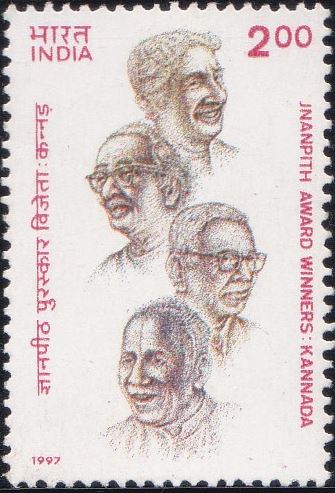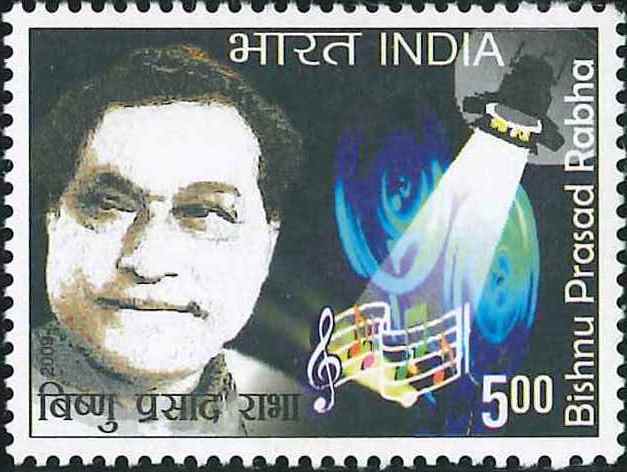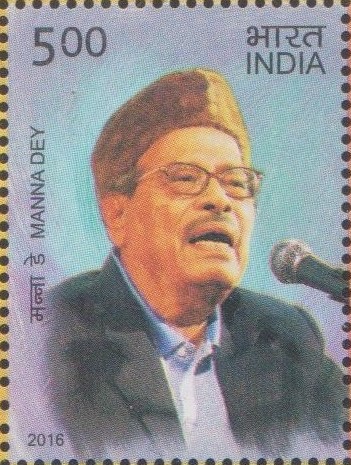
Jnanpith Award Winners : Bangla
A commemorative postage stamp on the Gyanpith Award Winners : Bengali [Bishnu Dey (1971), Tarashankar Bandopadhyay (1966) & Ashapurna Devi (1976)] :

 Issued by India
Issued by India
Issued on Jun 5, 1998
Issued for : The Department of Posts is pleased to issue special commemorative postage stamp in the memory of Shri Bishnu Dey, Shri Tarashankar Bandopadhyay and Smt. Ashapurna Devi.
Credits :
Stamp : Sankha Samanta
FDC & Cancellation : Smt. Alka Sharma
Type : Stamp, Mint Condition
Colour : Single Colour
Denomination : 200 Paise
Overall size : 4.06 x 2.73 cms.
Printing size : 3.71 x 2.38 cms.
Perforation : 13 x 13
Paper : Imported un w/m Adhesive Gravure Coated Stamp Paper in Sheets 50.8 x 53.5 cms.
Stamps Printed : 0.4 Million
Number per issue sheet : 40
Printing Process : Photogravure
Printer : India Security Press, Nashik
About :
The annual Jnanpith Literary Award has acquired all round recognition as a dependable symbol of excellence in great Indian literature comprising outstanding literary works in all the 15 languages enshrined in the VIII Schedule of the Constitution of India. Winners of the award over the years have all shared one common quality of being truly creative in their works and reflecting the essence of India‘s cultural Kaleidoscope. This special postage stamp issued by the Department of Posts pays tribute to the three great writers in Bangla for their outstanding contribution to the enrichment of Indian literature. The three Jnanpith Laureates in Bangla depicted in the stamp are (from top to bottom):
i) Shri Bishnu Dey (1909-1982) :
- Shri Bishnu Dey was recipient of this award in 1971 for his collection of poems, Smriti Satta Bhavishyat, adjudged the best creative literary work published in Indian languages between 1960-64. The poems of Smriti Satta Bhavishyat are expressions of a consciousness which transcended the dissociation of sensibility in colonial India and Bengal and emerged into the awareness of the total man in terms of a symbiosis of the memories of the past, the being of the present and the quest of the future. The lyric and the epic, the holy and the profane get emerged here and the “I” and the ‘Thou’ work hand-in-hand with ‘Them’, the toiling masses who make history. Apart from literary activity, Shri Bishnu Dey, as an art critic, also contributed immensely to the understanding and appreciation of the paintings of Rabindranath Tagore and Jamini Roy.
ii) Shri Tarashankar Bandopadhyay (1898-1971) :
- Shri Tarashankar Bandopadhyay was honoured with Jnanpith Award in 1966 for his work ‘Ganadevata‘ which was adjudged the best creative literary work published in Indian languages between 1925-59. Ganadevata is the expression of cultural and socio-economic values of rural Indian life of the period when industrial revolution was influencing these values. Ganadevata very vividly portrays the effect of industrialization on the then existing economic balance of the caste system and the problem created due to its disturbance. In selection of this theme of socio-economic change for his creation, Tarashankar‘s inspiration and sensitive sympathy proved to be an all-India phenomena.
iii) Smt. Ashapurna Devi (1909-1995) :
- Smt. Ashapurna Devi was awarded Jnanpith Award in the year 1976 for her Bangla novel ‘Pratham Pratishruti‘, adjudged the best creative literary work published in Indian languages between 1960-69. One of the leading Bangla writers for over 50 years, Smt. Ashapurna Devi by her creative literary work brought out various facets of not only Bengalee life but of human nature. Pratham Pratishruti depicts Bengalee women from the beginning of 19th century and the whole story has developed as a glorious novel, the centre point of which is Satyawati with her life and struggle. Smt. Ashapurna Devi has been decorated with Tagore Award, Leela Award and Bhuvan Mohini Gold Medal. The Govt of India bestowed on her the prestigious title of Padamashree in 1976.







